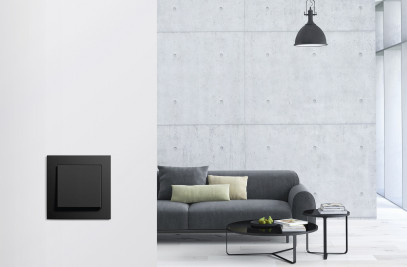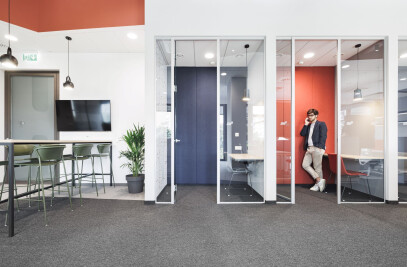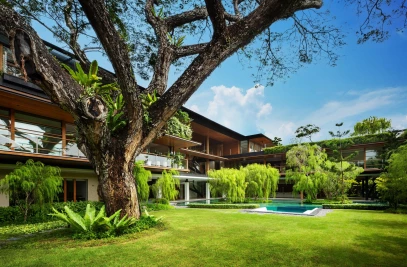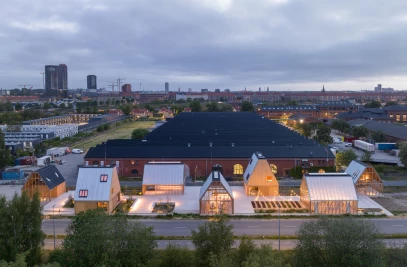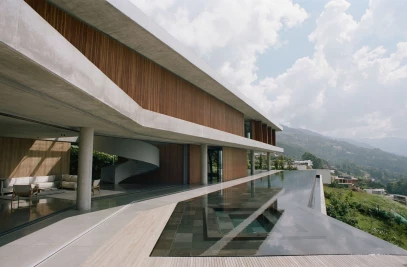In response to daunting environmental challenges, including climate change, architects and designers are increasingly incorporating more sustainably minded solutions into homes, residences, and offices. Among rising trends is the growing use of recycled and reused materials. Aiming to extend the lifecycle of fabric, tile, packaging, and other materials, while creating innovative and memorable spaces, these dozen projects point a way forward in a rapidly changing world.

1. Greenacres by Austin Maynard Architects
Austin Maynard Architects made use of recycled materials, most notably local bricks, for a private residence in Australia. In particular places, graffiti from the bricks’ previous incarnations is visible, adding patches of color and character to this distinctive home.
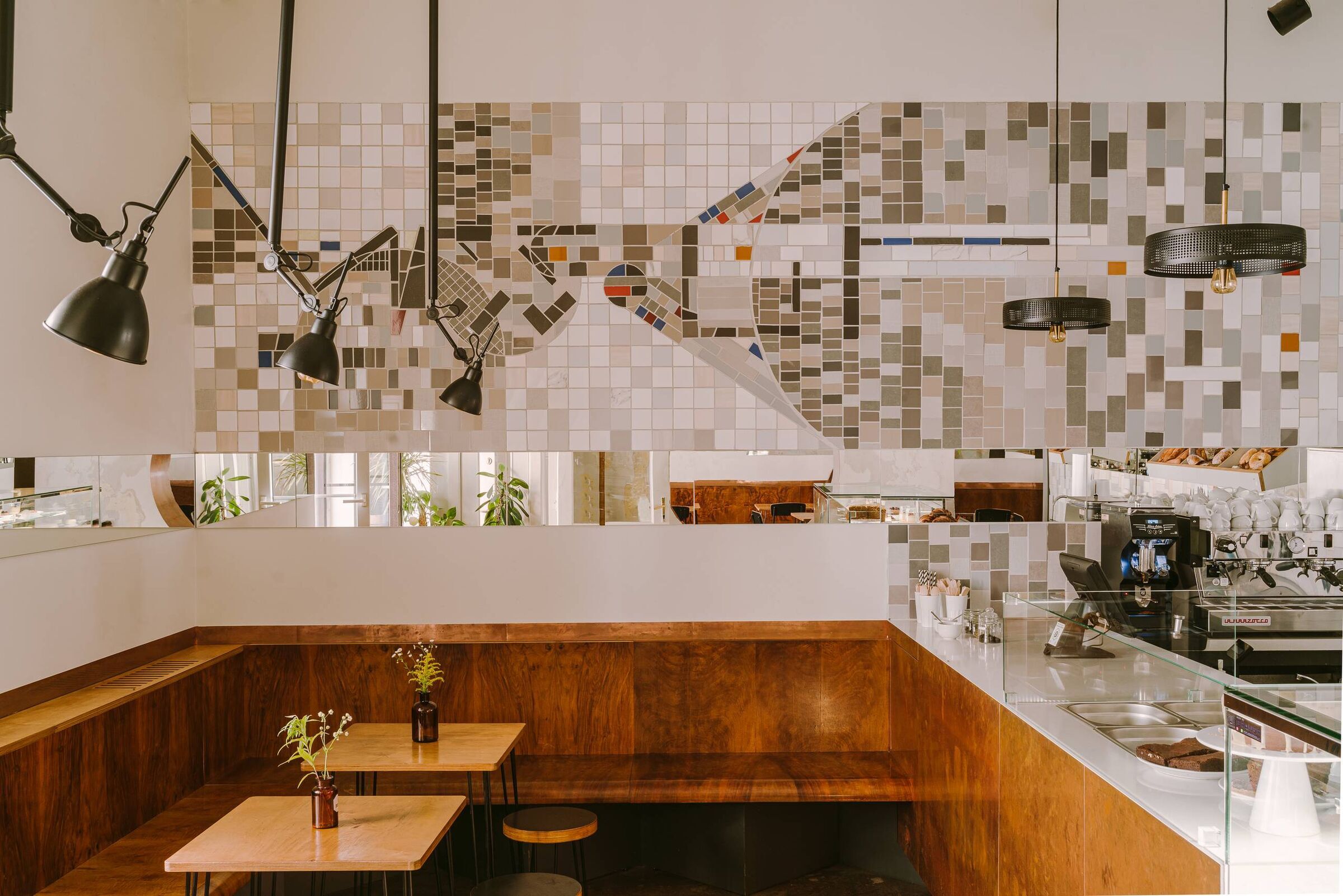
2. Café in Cracow by MiastoPracownia
Architects Barbara Nawrocka and Dominika Wilczynska took cues from the surrounding historic district for the design of this café. To imbue the eatery with charm, they turned to reused detailing, transformed to become something original. A large custom mosaic utilized old tile, but in a custom pattern, to create a focal point. Other interventions included benches made from old 1950s cabinets. The floors and walls were stripped and treated to match the decor.

3. Herschel Supply Shanghai Office by Linehouse
Within this office in China, Linehouse created an eye-catching door framed by recycled bricks. The bricks are a variety of colors and textures, creating visual interest and encouraging curiosity. They are in conversation with the rest of the office, where industrial details are used throughout.

4. Meraki Architecture Office by Meraki Architecture
The design of Meraki Architecture’s own office in Pune, India, was guided by an exploration of color, materiality, and effective use of space. The architects looked to the road outside, drawing pieces of that environment into the workspace. They used a stump from a sugarcane juice making machine, materials from packaging, discarded metal sheets, and other items from the city. The result is an understated statement on working with the surrounding environment, while transforming it.

5. Coshocton Ray Trace by Behin Ha
At a public park in the United States, Behin Ha Design Studio created an ethereal and inviting installation from scrap material while making use of the existing site. Strips of waste fabric from a nearby factory were tethered to the ground and wrapped around an existing metal balcony to create a space that visitors could walk into and sit within. After the close of the community exhibition, the fabric was returned to the manufacturer for recycling.

6. Zero Waste Bistro by Linda Bergroth
For a temporary restaurant at WantedDesign Manhattan design fair in New York City, Linda Bergroth designed a space that embraced and embodied sustainability. Every element was created with its environmental impact in mind. The table was formed from a recycled composite, while the speckled blue walls were made from food container waste. At the end of the exhibition, elements were recycled or repurposed.

7. Restuho (Recycling Studio Home) by REDAlab
The design of this home in Italy was guided by the use of humble and repurposed materials. Simple OSB board was left raw for the office desk and bookcase. In the bathroom, wooden scraps from boats were transformed into shelves. Vintage furniture mixes with an old ladder and belt to create a home that speaks to history while remaining contemporary.

8. Paper Pavilion by PAN- Projects
Wastepaper was utilized for this pavilion through a creative repurposing of the everyday material. The pavilion was originally created for the Copenhagen Art Fair and has since traveled to Kunsthal Charlottenborg contemporary art space to act as a reception area and bookstore.

9. Waste Side Story Pavilion by Cloud-floor
Designed to question conventional construction waste, this vibrant pavilion for Bangkok Design Week was created from recycled plastic bricks. The structure was meant to encourage questions about sustainability, the social value of design, and the role of the designer in environmental concerns. After its display period ended, the pavilion’s materials were dismantled and turned into chairs and bags.

10. Evitim: A Leftovers Tower by OMG: O'Donnell Miller Group
This tower at Art Omni, a U.S. arts center, was made from the waste of the adjacent pavilion. Wood boards leftover from the other project, previously CNC-cut, created this distinctive structure that rises seven meters. The pavilion addresses waste as a resource within architecture – and beyond.

11. Nordea Less Waste Office in Gdynia by Workplace
For this office in Poland, Workplace Solutions wanted to extend the lifecycle of the space and its elements. The architects refurbished electrical and ventilation systems and collected unused ceilings, carpets, and acoustic panels to use in the office. They integrated older plants, used bricks, and existing furniture. In all, 80% of the materials were recycled or environmentally friendly.

12. Citizen.MDW by Zwei Interiors Architecture
This temporary café in Melbourne, Australia, considers both consumer behavior and architectural interventions. Reused black milk crates formed the base of the coffee counter, as well as space partitions that were locked together with hemp ties. Over 100 solar panels generate all power needed for operations and visitors were asked to bring their own coffee cups.


























